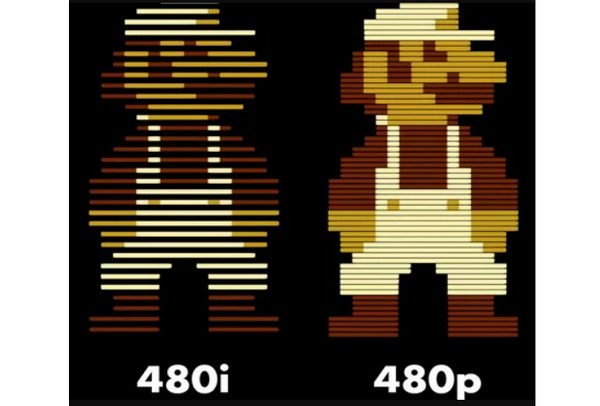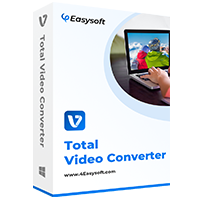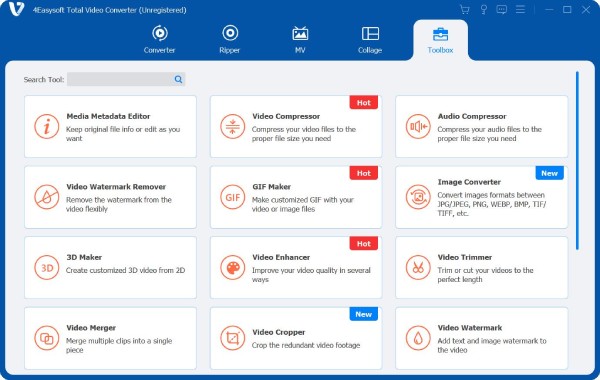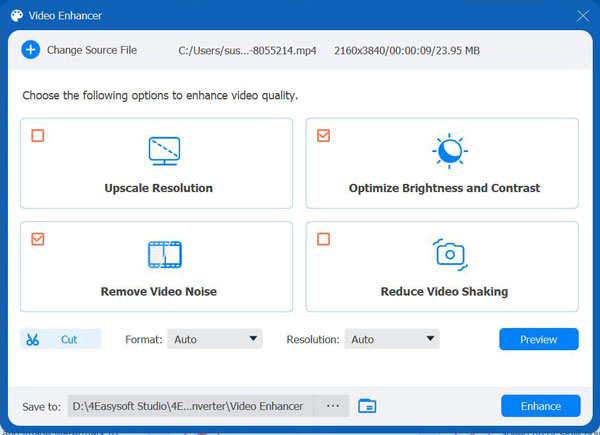Convert, edit, and compress videos/audios in 1000+ formats with high quality.
480i vs. 480p: What's the Difference and Which Is Better?
Why does my 480p video look much better than 480i on the same screen? Yes, both are standard definition formats, but they have differences in how they process and display frames, which leads to noticeable variations in quality. To understand better, dive into this 480i vs. 480p comparison. This post will dig deeper into the differences between 480i and 480p video formats. See how each works alongside how you can improve them and more.
Guide List
What Is 480i and 480p? Detailed Introductions Differences between 480i and 480p: Which Is Better? Best Way to Enhance Your 480i/480p Videos to Higher QualityWhat Is 480i and 480p? Detailed Introductions
When you're dealing with video resolution, primarily for old TVs, DVDs, or even YouTube settings, you may already be familiar with terms like 480i and 480p. These two fall to Standard Definition (SD), which was once the broadcasting and home media standard before high-definition and 4K. But which one is better for your entertainment needs? The following breaks it down for you, giving you the 480i vs 480p.
What is 480i?
480i stands for 480 interlaced lines, which is usually used in older analog TV systems and early digital broadcasts. Using this format, each video frame is made up of two fields, one with the odd-numbered lines and the other one has even-numbered lines.
Use cases: DVDs, Analog TV broadcasts, VHS tapes, and early game consoles
Resolution: 720 x 480 pixels
Pros: Works well with older display devices; lower bandwidth requirement
Cons: Lower visual clarity; more prone to flickering or visual artifacts
What is 480p?
480p is a format that offers better visual quality and is often referred to as enhanced-definition television. All lines in a frame are drawn in sequence from top to bottom, giving you a smoother and more precise image, especially for a moving sequence.
Use cases: DVDs, early digital players, YouTube videos, older flat-panel TVs
Resolution: 720 x 480 pixels
Pros: Fewer artifacts are displayed; smoother playback for fast motion scenes
Cons: Slightly higher data compared to 480i
Differences between 480i and 480p: Which Is Better?
While both 480i and 480p share the exact resolution of 720 x 480 pixels, their display of images makes a huge difference in visual quality. If you're having a hard time choosing between the two, knowing their difference can help you decide which is better suited for your needs.
Here's a detailed breakdown of the 480i vs. 480p in features:

480i vs. 480p: Display Method
480i displays visuals using odd lines first, then even. Meanwhile, 480p shows the whole frame in one pass.
480i vs. 480p: Scan Type
480i utilizes interlaced scanning, which splits each frame into two fields. 480p uses progressive scanning, showing all lines in sequence in a single frame.
480i vs. 480p: Image Clarity
480i usually looks softer or blurrier in fast scenes. 480p, on the other hand, delivers more stable visuals and is sharper with enhanced detail.
480i vs. 480p: Visual Artifacts
480i is more prone to flicker, combing effects, and motion blur because of interlacing. In contrast, 480p offers minimal artifacts, giving you cleaner images even during movement.
480i vs. 480p: Bandwidth Usage
480i needs slightly less bandwidth, which is ideal for older broadcast systems. 480p needs more bandwidth due to the complete frames it transmits, but this results in better quality.
480i vs. 480p: Compatibility
480i is compatible with analog TVs and older CRT displays. 480p is much better for digital displays and modern video players.
480i vs. 480p: Overall Quality
480i is functional but has limitations in modern scenes. 480p is the superior format when it comes to sharpness, motion handling, and image stability.
As you've seen, both are standard definition formats, but 480p offers a visibly better viewing experience because of its progressive scan technique. Using it, you can have a clearer, more stable video, especially in movement scenes, making it the better choice for your viewing needs when available.
Best Way to Enhance Your 480i/480p Videos to Higher Quality
After the battle between 480i vs. 480p, you may still want to keep the content, as it holds such memories. Older videos captured in 480i or 480p often look pixelated or blurry when played on modern high-resolution displays. Thankfully, you won't have to settle anymore with these outdated visuals anymore. With 4Easysoft Total Video Converter, you can upgrade the quality of your standard-definition videos with innovative enhancement tools powered by AI! Whether it is old family footage, screen recordings, or archived content, this software will help you bring them back to life. Here, you can change video resolution, stabilize shaky clips, remove video noise, and even optimize brightness and contrast, all with just a few clicks!

AI-powered upscaling from 480p/480i videos to Full HD or even 4K.
See real-time changes before exporting your enhanced video.
Let you tweak resolution, frame rate, bitrate, and more to obtain a perfect output.
Offer a built-in editor to trim, rotate, crop, add effects, filters, etc.
100% Secure
100% Secure
Step 1Launch 4Easysoft Total Video Converter and head to the "Toolbox" widget tab from the top menu. There, locate the "Video Enhancer" from the list of available tools, and click on it.

Step 2Now, upload your 480i/480p video by clicking the "Add" button. In the next window, enable the enhancement features you need. Use the Upscale Resolution tool to choose 1080P resolution and even 4K for quality enhancing.

Step 3After all that, select an output folder and preview your changes first by clicking the "Preview" button. Once satisfied, click the "Enhance" button to process and save your enhanced video.
Conclusion
When comparing 480i vs. 480p, it is clear that both share the exact resolution, but the way a video is displayed makes a huge difference. With 480p, you can have a sharper, smoother viewing experience. On the other hand, 480i is more open to motion blur and flickering. If you have any existing 480i or 480p videos that you wish to play on your device, use 4Easysoft Total Video Converter to enhance those old footages! With features like AI-powered resolution upscaling and more, your old video can have a new life, upgrading it to HD or even 4K effortlessly.
100% Secure
100% Secure


